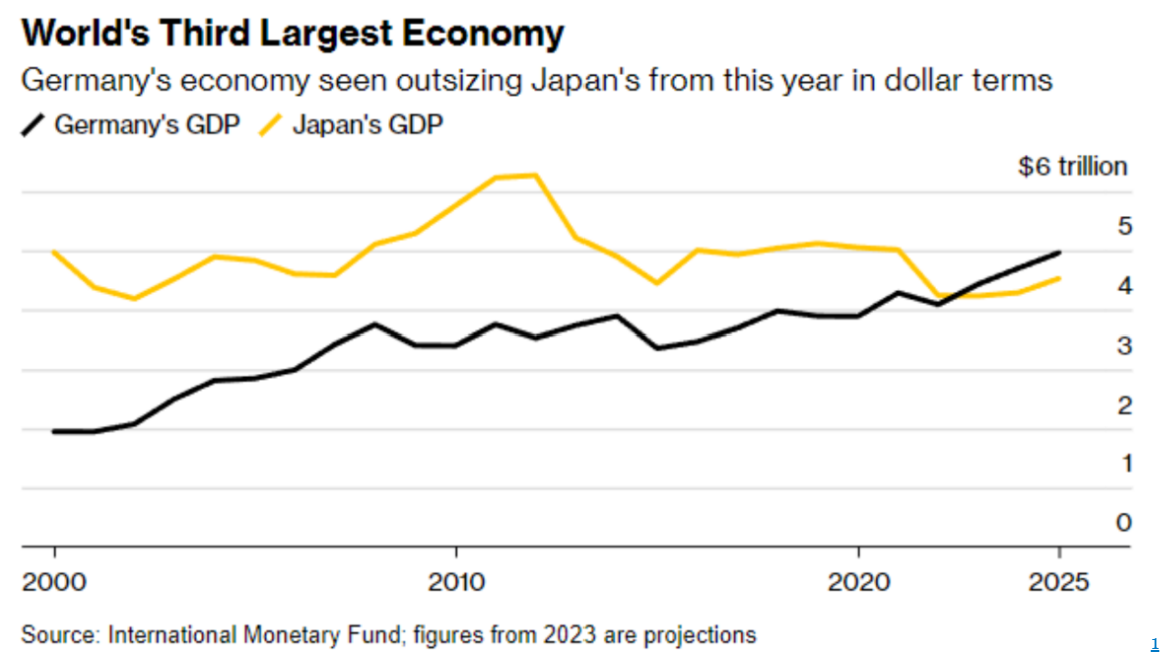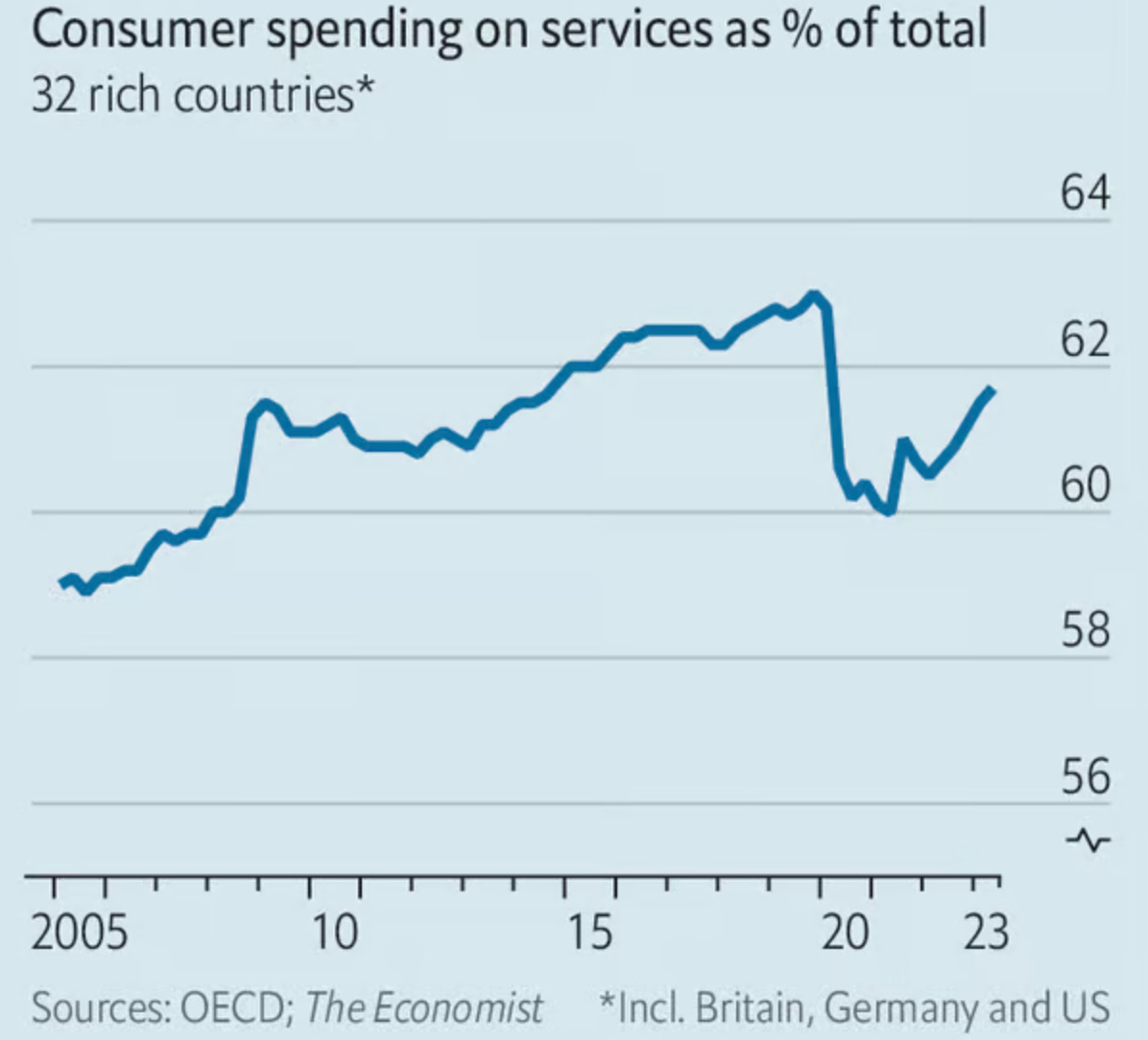From China, Germany to Sodium Batteries & a globally accepted Super App in the making
This we move from China to Germany, while talking about stingy consumers. We also look at a Super App while looking at replacement of Li-ion batteries
Rising debts in China
The issue of local government debt in China has become a pressing concern. The fiscal system in China assigns most of the tax revenue to the central government, while leaving the majority of the spending, except for defense, to the local governments. This has resulted in a heavy debt burden for the city governments over the years.
The International Monetary Fund estimated in February that the ratio of local government debt to gross domestic product in China will increase by 9 percentage points in 2023, compared to 5 points in 2022 and 2 points in 2021.
This is partly due to the decline in two key sources of local government income—taxes and land sales for property development—in 2022, amid the rising costs of combating the Covid-19 pandemic.
Germany overtakes Japan as the world’s 3rd largest economy?
According to the International Monetary Fund’s latest projections, Germany’s nominal gross domestic product will surpass Japan’s in 2023, making it the third largest economy in the world after the United States and China.
Germany’s economy is expected to reach $4.43 trillion this year, while Japan’s will be $4.23 trillion.
One of the main factors behind this shift is the depreciation of the yen against the dollar and the euro, which reflects the divergent monetary policies of the major central banks.
The Federal Reserve and the European Central Bank have tightened their monetary stance to combat inflation, while the Bank of Japan has maintained its ultra-loose policy to support price stability after years of deflation.
However, Japan recently announced an economic stimulus package that will include an extension of energy subsidies, a measure to help alleviate the burden of rising living costs due to Japan’s highest inflation in decades. The package will contain measures to sustain wage growth and some form of tax reduction.
Are we in an era of “stingy” consumers?
The service sector had been expanding its share of consumer spending for years before the covid-19 pandemic. As societies became more affluent, they demanded more services such as luxury experiences, health care and financial planning.
However, the pandemic disrupted this trend in 2020, as lockdowns severely curtailed spending on services, from hotel stays to haircuts. Meanwhile, consumers shifted their spending to goods, especially those related to home-based activities, such as computer equipment and exercise bikes.
Three years later, the service sector has not fully recovered its pre-pandemic share of consumer spending
Consumers in rich countries are spending about $600bn a year less on services than what would have been expected in 2019. This spending gap is being filled by goods, including durables such as chairs and fridges, as well as non-durables such as clothes, food and wine.
Japan has experienced a 50% drop in restaurant bookings for business purposes.
The stock market are reflecting these changes. Goldman Sachs has been tracking the share prices of companies that benefit from either stay-at-home or out-and-about consumer behaviour. The market favours firms that cater to stay-at-home consumers.
Are we seeing a globally accepted “Super App”?
Superapps are essentially applications that offer a wide range of services, evolving into self-contained ecosystems. In Asia, giants like WeChat and Grab exemplify this concept. WeChat, primarily a chat app, integrates “mini-apps” for various purposes, including payments, shopping, and utility bill payments.
Is WhatsApp becoming the first globally accepted Super App?
Let’s first see the journey of WhatsApp:
WhatsApp’s potential was evident from the moment they acquired the platform in 2014 for a staggering $19 billion.
By 2017, WhatsApp had begun introducing customer service features, and the following year, WhatsApp Business and its API were launched.
2020: WhatsApp Business improved with the introduction of product catalogs for easy shopping. WhatsApp also initiated its attempt to enable peer-to-peer money transfers in Brazil and announced WhatsApp Pay, a payment system.
2021: WhatsApp launched a directory of nearby businesses with WhatsApp Business profiles.
2022: WhatsApp introduced communities as a way to interact in larger groups, while ensuring the privacy of phone numbers. In India, WhatsApp allowed users to shop at the JioMart supermarket and book metro tickets through the app.
2023: The introduction of channels as a one-way communication mode marked a significant step, as WhatsApp opened up to various shopping experiences through new purchase flows and payment methods.
Currently WhatsApp offers many features, including the following:
Messaging: Personal and group chats, calls, and video calls.
Community Engagement: Communities and groups with a large number of members, expanding interactions beyond personal circles.
News: Channels that provide news and updates.
Financial Transactions: The ability to send money between individuals.
Shopping: Purchasing from small businesses via WhatsApp, complete with product catalogs.
Customer Support: Contacting customer service for businesses and organizations.
Grocery Shopping: Shopping for groceries through platforms like JioMart.
Definitely, WhatsApp is on its way towards a Super App, if not already reached that destination!
Are sodium batteries the next big thing?
Lithium-ion (Li-ion) batteries have revolutionized the fields of consumer electronics, electric vehicles and renewable energy. But they are not without drawbacks. Lithium is a scarce and expensive element, and the best Li-ion batteries also require cobalt and nickel, two other metals that are in high demand and short supply. Moreover, extracting these metals often involves environmental and social costs, such as pollution and human rights violations. To address these challenges, some researchers and companies are looking for alternatives to lithium.
One promising candidate is sodium, a cheap and abundant element that makes up most of the salt in the oceans. Sodium has similar chemical properties to lithium, but it does not need cobalt or nickel to make high-performance batteries.
Sodium batteries have several advantages over Li-ion batteries, such as lower cost, higher safety and longer lifespan. However, sodium batteries also face some challenges.
Sodium atoms are bigger and heavier than lithium atoms, which means that sodium batteries have lower energy density (the amount of energy stored per unit mass or volume) than Li-ion batteries. This makes them less suitable for applications that require lightweight and compact batteries, such as smartphones or drones.
However, sodium batteries could still find many uses in other sectors, such as grid-scale storage, home storage and heavy transport. These applications do not require very high energy density, but they do require low cost, high safety and long lifespan.
Sodium batteries are not just a theoretical possibility. They are already being developed and manufactured by several companies, especially in China.
According to Benchmark Mineral Intelligence, a market-research firm, Chinese firms have 34 Na-ion-battery factories built, being built or announced inside the country, and one planned in Malaysia.
These factories could produce up to 140 gigawatt-hours of sodium battery capacity per year by 2030, although only about half of this capacity is expected to be operational.
As the demand for batteries grows in the coming years, sodium could become a key ingredient for a more sustainable and affordable energy future.









